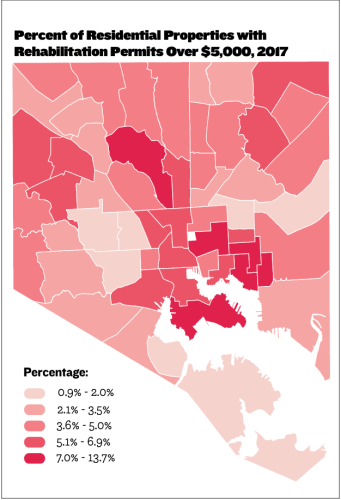Get Involved
NCST’s work increases access to homeownership, promotes resilient neighborhoods, and advances racial equity by advocating for policy change.
Baltimore middle neighborhoods are able to monitor change through access to annually updated data and quality of life indicators for each of 55 community statistical areas. The Baltimore Neighborhood Indicators Alliance-Jacob France Institute (BNIA-JFI) at the University of Baltimore provides the data, and was founded in 2000 to strengthen Baltimore neighborhoods by providing meaningful, accurate, and open data at the community level.
Vital Signs includes more than 150 indicators related to demographics, housing, crime, workforce, health, housing, education, and sustainability. These indicators can be compared to one another, on a community-by-community basis, or to the whole of Baltimore City. Taken together, Vital Signs form a picture of any given neighborhood’s quality of life and overall health. The data is available openly in multiple formats for everyone to use for research, policy development, program evaluation and other needs.

BNIAJFI’s Director Seema Iyer points out that having a clear, quantified understanding of current conditions and the trends that have produced them is the first step to effective action. For example, Vital Signs data showed very few home sales in some neighborhoods, which may have meant that homes were not changing ownership as neighborhood residency underwent generational shifts. Baltimore community leaders corroborated the data with anecdotal experience of families that had not officially transferred property titles as part of inheritance. This created barriers to accessing capital and credit, left family assets vulnerable and ultimately impacted neighborhood reinvestment. Organizing pro bono legal assistance for homeowners to clean up title issues has proven to be a relatively inexpensive and effective way of removing these blockages and opening the way for improvement.
BNIA-JFI designed its core functions based on the knowledge that leaders at the neighborhood, city-wide and regional levels in Baltimore needed a common way of understanding how neighborhoods and the overall quality of life change over time. The annual release of BNIAJFI’s Vital Signs report and open data portal democratizes access to information about neighborhoods which has enabled more equitable discussions about what is best for changing conditions. Baltimore needed a mechanism to hold itself and all others who work, live, play, and invest in its neighborhoods accountable for moving in the right direction.
BNIA-JFI also builds on and coordinates the related work of citywide nonprofit organizations, city and state government agencies, neighborhoods, foundations, businesses and universities. Additional capabilities include GIS services, strategic neighborhood planning, program evaluation, legislative and policy analysis, customized training and quantitative or qualitative research services.
For Media Inquiries:
Please reach out to the following NCST staff for comments on Middle Neighborhoods:
Marcia Nedland, Lead Organizer
To receive updates on middle neighborhood Community of Practice activities and general information about middle neighborhoods, please sign up here. By signing up, you will also receive the bi-monthly Community of Practice newsletter.
NCST’s work increases access to homeownership, promotes resilient neighborhoods, and advances racial equity by advocating for policy change.